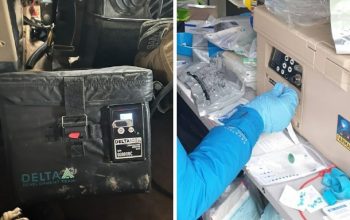As 2021 gets underway, Nammo and MAC are taking another step towards developing the future of military ammunition. In late 2020, Nammo acquired the remaining shares in the company, an acquisition that has since received formal approval by the US government. Based out of Bay St. Louis, Mississippi, MAC LLC remains the only provider of polymer-cased ammunition to deliver fully qualified and combat proven products to operational units. Nammo made its initial investment in MAC in January 2018, before becoming a majority shareholder a year later, in January 2019. MAC’s polymer case designs are today used extensively by both US and international Special Forces units.
For more than 150 years, the basic shape of ammunition has remained the same.One of the lightweight materials that some hoped would one day replace brass has included various types of polymer – roughly equivalent to a stronger form of plastic. But there were big problems. While often performing well in normal temperatures these early polymer cases would become brittle and break in extreme cold, or become soft and melt at high temperatures. In 2007, seeing the potential of their new invention, Gibbons helped set up a company called MAC LLC in Bay St Louis, Mississippi, to develop their new polymer into a real competitor to the brass casings used on ammunition for more than 150 years.
“Since we made our initial investment three years ago, we have seen significant interest in the benefits of polymer ammunition from several potential customers. As the only company with an operationally proven product, we believe we are in an excellent position to establish ourselves as the market leaders within this segment,” said Reijo Bragberg, Nammo’s EVP for Small and Medium Caliber Ammunition.

“Bringing in MAC as a full member of the Nammo family fits very well with our overall strategy. It increases our ability to support our men and women in uniform by lightening their load and boosting their combat efficiency, and it reinforces our position as the world leader in specialty ammunition,” said Morten Brandtzæg, President and CEO of Nammo.
As a testament to its success, MAC LLC already has the capacity to produce four million polymer cases per year – mainly 50 .cal (12.7mm) – and has the ability to ramp up to 10 million units to meet future demand. They received a further boost in 2018 when ammunition specialists Nammo bought a majority stake in MAC LLC. This expands MAC’s reach to the rest of the world, with its European debut taking place at the Nammo booth at this year’s DSEI in London, England. Polymer-cased 50 .cal rounds have already been qualified by the US Government, and are in use with some units including US Special Operations Command (USSOCOM).
Before adoption by USSOCOM, much of the early testing of the MAC LLC polymer-cased ammunition and its maturation was led by the US Marine Corps (USMC), beginning around a decade ago via the Defense Production Act Title III program. This fruitful partnership with the USMC is set to continue in the future. As well as offering this mature 50 .cal solution to customers around the world, Nammo and MAC LLC are also exploring other calibers options. MAC LLC currently has a development contract with the US Defense Ordnance Technology Consortium to design a polymer-cased 7.62mm round for use in miniguns and light machine guns. There is also work with the US Combating Terrorism Technical Support Office to develop a .338 Norma Magnum solution.

























